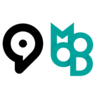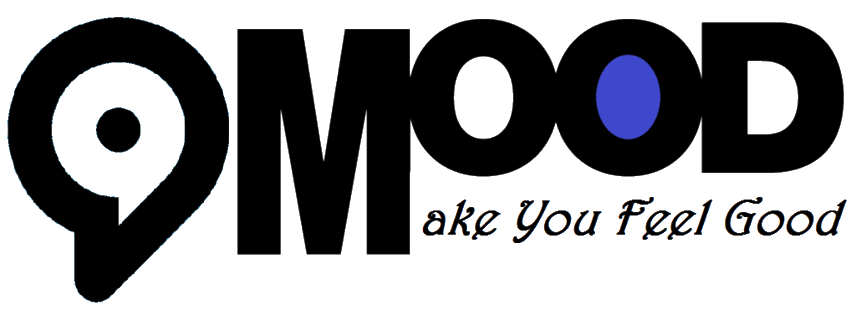The Evolution of Emojis: From 🤔 to 🧑💻
Let’s take a moment to appreciate something we probably use at least once a day (if not more): emojis. Those little icons have gone from being just a cute way to add some flair to your texts to becoming a full-on language of their own. We all know that feeling of typing a message and wondering, “Should I add a 🙄 or 🤡 to really get my point across?” But have you ever stopped to think about how emojis evolved from basic smiley faces to digital characters that can help you express everything from "I’m confused" to "I’m an emotionally overextended remote worker"? Well, buckle up, because the emoji journey is one for the books.

1. The Beginning: Simple, Yet Profound 😌
In the beginning, emojis were simple. We’re talking about the classic “smiley face” 🙂, the winking 😉, and the thumbs-up 👍. These early emojis were like the cavemen of the emoji world—basic, rudimentary, and just trying to survive. They weren't here to start a revolution. They just wanted to make sure you knew that your friend was actually laughing at your joke, not just typing “LOL” out of politeness.
But don’t get it twisted, these early emojis served a crucial purpose: they added tone. Because nothing says, “Hey, I’m kidding” quite like the wink emoji 😉. The emoji wasn’t just a picture; it was a window into the emotion behind the message. Without it, we were all stuck in a digital world of tone-deaf texting. And let’s be real—without emojis, a “lol” can sound sarcastic. It’s like the difference between a regular “yes” and the enthusiastic “YAAASSSS!!!” The emojis were the game-changers.
2. The Rise of the “Mood” Emojis 😎🖤
Next, we entered the era of emojis with mood. These were the days when you could confidently text your friends an angry face 😡, or when you and your bestie could both send a heart ❤️ and know exactly how much you cared about that last TikTok dance you nailed together. Emojis started to reflect feelings, not just simple expressions. Now, you had options.
Feeling bad? 😞
Feeling sassy? 😏
Feeling cute? 😘
Feeling like you need some time alone? 😤
By this point, emojis were no longer just there to clarify tone—they were full-blown expressions of personality. If you sent a 😎 emoji, you weren’t just “cool”—you were “I’m in control of this conversation.” And the rise of the "mood" emoji opened a door to deeper, more nuanced conversations. Suddenly, your chat became more like a 90’s sitcom episode, with emojis standing in for every facial expression and emotion.
3. The Expansion: Welcome the Characters! 🧑🦱👨🦳🧑🦳
Let’s talk about how emojis got extra—and not just in terms of facial expressions. With the rise of diverse characters, emojis evolved into the inclusive, multicultural digital world we know today. People no longer had to settle for the basic “blonde hair, blue eyes” smiley—they could now pick an emoji that looked more like them! From the classic "👩🏾🦱" to "🧑🦳" to "👩🏼🦰," emojis took on personality, ethnicity, and even job roles! We even got emojis for professions! There’s an emoji for every role in society now:
-
👩🍳 for your friend who's always cooking
-
🧑🏫 for your teacher (because, of course, we all have one emoji for each profession)
-
🧑💻 for the people who live and breathe their remote work life.
Suddenly, emojis weren’t just about reacting to a message—they were storytelling tools. Want to explain your hectic workday? 🧑💻💻🧑🏫🍕. Boom, instant narrative!
4. The Emojis With Attitude 🙄💅🏻🤡
Okay, here’s where things get fun. Emojis weren’t just reflecting emotions anymore—they were giving the internet a whole new attitude. Emojis like the “facepalm” 🤦♀️, the sassy “flipping hair” 💁♀️, or the classic “eye roll” 🙄 are now part of our everyday texting lingo. They aren’t just emojis—they’re mood indicators. They’re mood storytellers.
In fact, your emoji now says more than just “I’m here.” It can literally communicate the vibe of your entire day. Take the "🤡" emoji—this little guy is often used to call someone out for being a clown. Use it when you’re tired of dealing with nonsense, or when someone says something that’s just so “out there” you have to laugh. Or the "🙄" emoji for when someone texts you a novel of a message that could have been an email. It's sass in a tiny picture, and it’s perfect.
5. Enter the Professional Emojis 🧑💻💼
As we began to rely more on our phones for professional communication—hello, Zoom meetings, Slack chats, and emails—emojis made their way into the workplace. At first, we were all a little hesitant to add a 😉 or 😇 to a serious email (as if that wasn’t a huge risk). But as remote work became the norm, emojis became the professional icebreakers we didn’t know we needed.
Need a little humor during a Zoom meeting? A “💡” lightbulb emoji to show your idea just clicked. Or how about the “👍” to show your team you're on board? And, of course, let’s not forget the humble “🙏” emoji when you’re thanking someone for fixing that email issue at 11 PM. Emojis were officially not just a "fun" thing for teens anymore—they were helping keep the office alive with a little humor. Who knew emojis could save us from the soul-crushing monotony of work emails? 😜
So, What’s Next for Emojis?
Let’s face it—if emojis could talk, they’d have a lot to say about our digital communication habits. They’ve evolved from simple smileys to full-on characters with their own lives, personalities, and attitudes. And as long as we continue to text and DM, they’ll evolve with us.
Who knows? Maybe the future holds even more emoji possibilities—like augmented reality emojis or ones that can express more than just facial expressions. Until then, we can rest easy knowing that the humble 🙂 has turned into a mood, and our messages will never be the same.
Discover more from 9Mood
Subscribe to get the latest posts sent to your email.


























0 Comments